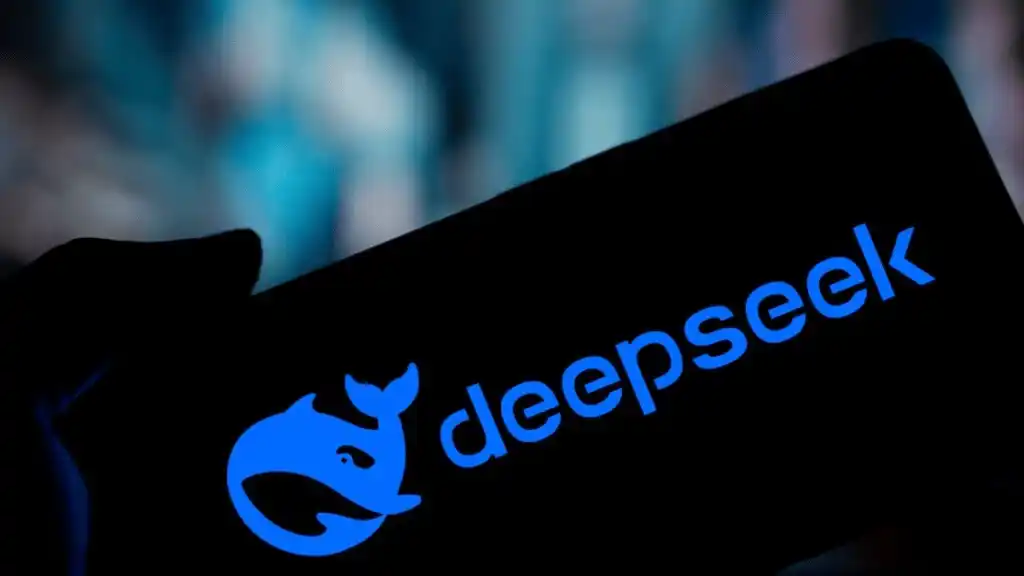DeepSeek: How a Modest Startup is Disrupting the AI Landscape, A Perspective by Zeeshan Hayat

As major tech giants pour billions into AI development, the Chinese startup DeepSeek is redefining what AI can achieve. With just $6 million in funding, DeepSeek has rapidly gained recognition for its remarkable ability to develop cutting-edge AI solutions without the need for massive capital investment in infrastructure or proprietary models. This strategy stands in stark contrast to the industry norm, where powerhouses like OpenAI and Nvidia heavily rely on vast computational resources and expensive hardware to drive their AI breakthroughs.
Rather than focusing on sheer size and complexity, DeepSeek has engineered a lean and efficient approach to AI. Its success isn’t just about cutting costs—it’s about rethinking the AI development pipeline in ways that prioritize accessibility, efficiency, and adaptability over the conventional approach of raw computing power.
A New Kind of AI Infrastructure: Modular, Scalable, and Open
What sets DeepSeek apart is its utilization of open-source models, combined with a highly efficient use of existing hardware. While competitors like OpenAI and Google invest heavily in custom-designed supercomputers and proprietary software ecosystems, DeepSeek has embraced the power of Nvidia’s H800 chips. These chips are much more cost-effective while still offering strong computational performance, allowing DeepSeek to develop sophisticated AI tools at a fraction of the price.
The real game-changer, however, is DeepSeek’s modular approach to AI systems. Instead of building monolithic, rigid AI architectures, DeepSeek crafts scalable, flexible AI models that can be tailored to specific use cases. This modularity is what gives their system unparalleled versatility, allowing smaller companies, startups, and even smaller governments to harness AI technologies that were previously out of reach. DeepSeek isn’t just creating a product—they’re building a framework that can evolve alongside emerging needs.
Data Vulnerability: The Privacy and Security Question
As a Chinese company, DeepSeek’s rise also brings forward an important concern—data vulnerability. With AI systems increasingly integrating into critical industries such as healthcare, education, and finance, questions arise about what happens to the data processed by DeepSeek’s models. Governments and enterprises investing in AI must evaluate how these technologies handle sensitive information, especially considering the broader global debates surrounding data security and national interests.
DeepSeek has yet to provide a clear framework on how it will address data privacy and security concerns on a global scale. Will it comply with international data protection regulations, or will its operations be influenced by Chinese data laws, which require companies to cooperate with government requests for information? These uncertainties could shape how businesses and regulatory bodies perceive and adopt DeepSeek’s technology in different regions.
Human-Centric AI: Shifting the Focus from Power to Practicality
DeepSeek’s vision for AI isn’t confined to efficiency; it’s about creating AI that aligns with human needs. DeepSeek’s CEO, Liang Wenfeng, has emphasized the importance of human-centric AI. Rather than building systems that simply automate tasks or replicate human cognition, DeepSeek aims to develop AI that enhances human capabilities. This vision goes beyond just improving efficiency—it’s about making AI a tool that supports and interacts with the complexities of human society in meaningful ways.
This human-centric model has allowed DeepSeek to tailor its AI to industries where human interaction and decision-making are paramount. The company’s solutions are already being adopted in the healthcare, education, and customer service sectors, where the human element is integral to the value they provide. DeepSeek’s ability to craft nuanced AI systems capable of understanding and adapting to human behavior sets them apart from the more mechanical, one-size-fits-all approaches of their larger competitors.
Challenging the Economics of AI: Efficiency Without Sacrificing Potential
DeepSeek’s breakthrough is a challenge to the prevailing narrative in AI development. Traditional models emphasize massive investments in infrastructure—whether in terms of GPUs or custom hardware—to drive AI innovation. But DeepSeek is proving that AI can be developed at a fraction of the cost. The company’s reliance on open-source software and scalable hardware solutions means that it’s able to deliver powerful AI systems without needing a continuous flow of capital to maintain a sprawling technological empire.
The implications of this shift are profound. DeepSeek’s approach could disrupt the economic model that has defined AI development for years, particularly in terms of cost-benefit analysis. By focusing on efficiency—both in terms of computational resources and financial expenditure—DeepSeek has created a blueprint for how AI companies can scale without inflating operational costs. This approach is creating a ripple effect, forcing other companies in the AI space to reconsider the sustainability and long-term viability of their own infrastructure-heavy models.
AI for the Masses: Bridging the Gap Between Innovation and Accessibility
DeepSeek’s impact is not just about pushing the boundaries of what AI can do—it’s about how it democratizes access to those capabilities. By slashing costs and making AI more accessible to a broader range of businesses, DeepSeek is creating new opportunities in industries that had previously been excluded from the AI revolution. Small businesses, local governments, and organizations in emerging markets now have the tools to leverage AI in ways that were once reserved for the tech elite.
This democratization is a key factor in DeepSeek’s appeal. AI is no longer the exclusive domain of large corporations or well-funded startups. With a lower barrier to entry, businesses that were previously unable to afford AI solutions can now integrate advanced technologies into their operations—whether for automation, data analysis, or predictive capabilities. The scalability of DeepSeek’s model means that it can cater to companies of all sizes, from small local businesses to larger enterprises, broadening the horizon for what’s possible.
The Competitive Landscape: Shifting the Power Dynamic
DeepSeek’s rise is rattling the status quo. The company’s ability to offer AI capabilities at a lower cost is forcing industry giants like Nvidia and OpenAI to reassess their own market positions. DeepSeek’s focus on computational efficiency is undermining the very foundation of how large tech firms have built their AI empires—one that relies on expensive hardware and proprietary models. As DeepSeek continues to prove that AI can be both scalable and cost-efficient, it’s forcing other players to rethink their approach.
Moreover, the company’s success has also had ripple effects on the broader financial market. Nvidia, the dominant force in AI hardware, has seen its stock plummet as investors begin to realize that DeepSeek’s model doesn’t require the expensive chips that Nvidia manufactures. This shift in the competitive landscape is a clear sign that the AI market is ready for a transformation, one where efficiency, accessibility, and adaptability take precedence over pure power.
DeepSeek’s Blueprint for the Future: Sustainable, Scalable AI
As DeepSeek continues to push forward, the industry is watching closely. What makes their model truly innovative isn’t just the technology itself, but how it’s shifting the conversation around AI development. The company is proving that the future of AI doesn’t lie in unsustainable growth or insatiable demand for computational resources. Instead, the future is about building smarter, leaner systems that can scale without inflating costs or sacrificing performance.
By focusing on sustainability and efficiency, DeepSeek is not just redefining the economics of AI—it’s shaping the way we think about the future of technology as a whole. Its success challenges traditional assumptions about what is possible and opens the door to new, more inclusive models of innovation.
How do you think DeepSeek’s approach to AI development will influence the strategies of larger tech companies in the coming years?
